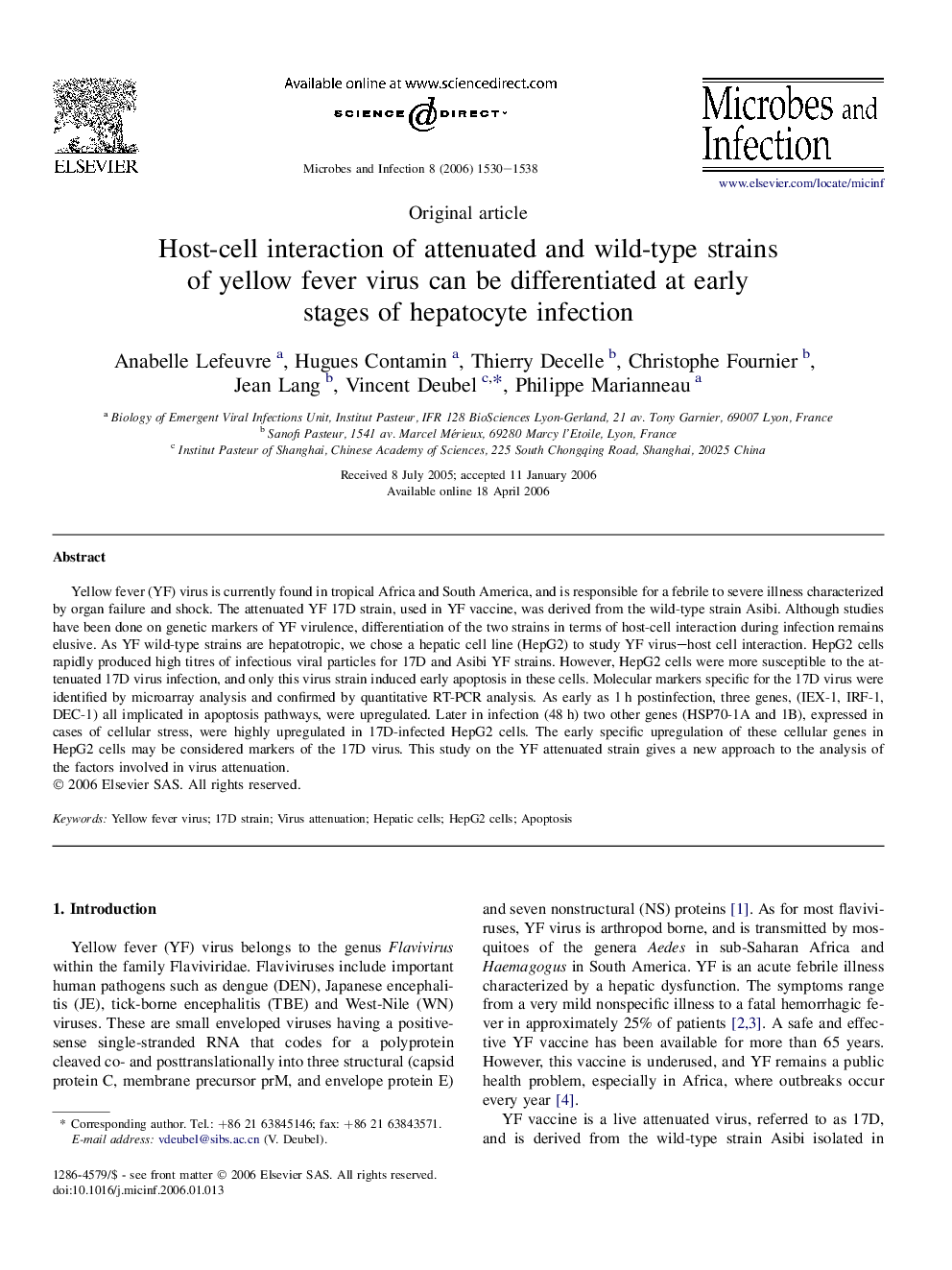| Article ID | Journal | Published Year | Pages | File Type |
|---|---|---|---|---|
| 3416043 | Microbes and Infection | 2006 | 9 Pages |
Yellow fever (YF) virus is currently found in tropical Africa and South America, and is responsible for a febrile to severe illness characterized by organ failure and shock. The attenuated YF 17D strain, used in YF vaccine, was derived from the wild-type strain Asibi. Although studies have been done on genetic markers of YF virulence, differentiation of the two strains in terms of host-cell interaction during infection remains elusive. As YF wild-type strains are hepatotropic, we chose a hepatic cell line (HepG2) to study YF virus–host cell interaction. HepG2 cells rapidly produced high titres of infectious viral particles for 17D and Asibi YF strains. However, HepG2 cells were more susceptible to the attenuated 17D virus infection, and only this virus strain induced early apoptosis in these cells. Molecular markers specific for the 17D virus were identified by microarray analysis and confirmed by quantitative RT-PCR analysis. As early as 1 h postinfection, three genes, (IEX-1, IRF-1, DEC-1) all implicated in apoptosis pathways, were upregulated. Later in infection (48 h) two other genes (HSP70-1A and 1B), expressed in cases of cellular stress, were highly upregulated in 17D-infected HepG2 cells. The early specific upregulation of these cellular genes in HepG2 cells may be considered markers of the 17D virus. This study on the YF attenuated strain gives a new approach to the analysis of the factors involved in virus attenuation.
